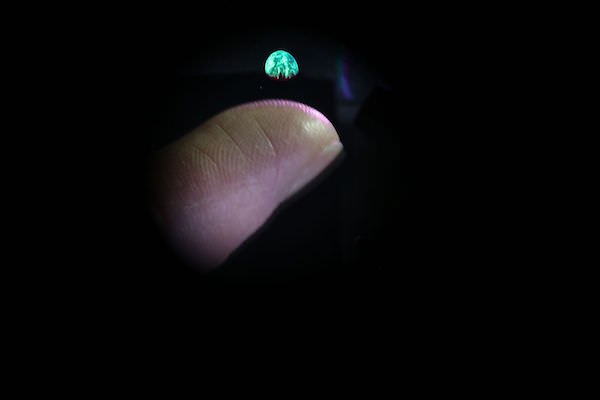
[Image above] Credit: Daniel Smalley Lab; Nate Edwards/BYU Photo
Science fiction has officially become nonfiction—scientists have developed a method to create real-life floating displays projected into the air.
The word that might come to your mind is “hologram”—but, as lead scientist Daniel Smalley explains, the displays his team created, called volumetric displays, are so much better than holograms.
While holograms are only visible from a set range of viewing angles, volumetric displays can be viewed from all around.
“We refer to this colloquially as the Princess Leia project,” Smalley says in a Brigham Young University press release. “Our group has a mission to take the 3-D displays of science fiction and make them real. We have created a display that can do that.”
The researchers liken the technique to 3-D-printing an individual particle—trapped at a fixed point in space with a laser beam—in the air to create an entire image, similar to how you can capture an image traced from the point of lit sparkler in a long-exposed photograph. Like this:

Credit: ElizabethHudy; Flickr CC BY-ND 2.0
Still not clear?
If that description doesn’t make you say “What?,” then the more scientific explanation surely will.
According to the BYU news release, the researchers have “devised a free-space volumetric display platform, based on photophoretic optical trapping, that produces full-color, aerial volumetric images with 10-micron image points by persistence of vision.”
Despite what it sounds like, this is real—watch the video below to see for yourself and to hear a more detailed description from the scientists themselves.
Credit: nature video; YouTube
The research, published in Nature, is “A photophoretic-trap volumetric display” (DOI: 10.1038/nature25176).
Did you find this article interesting? Subscribe to the Ceramic Tech Today newsletter to continue to read more articles about the latest news in the ceramic and glass industry! Visit this link to get started.
